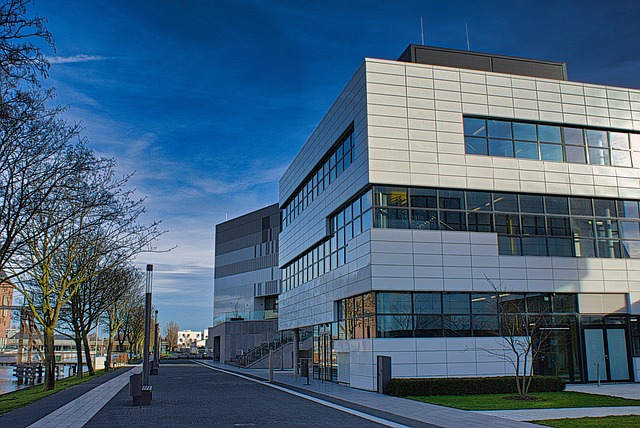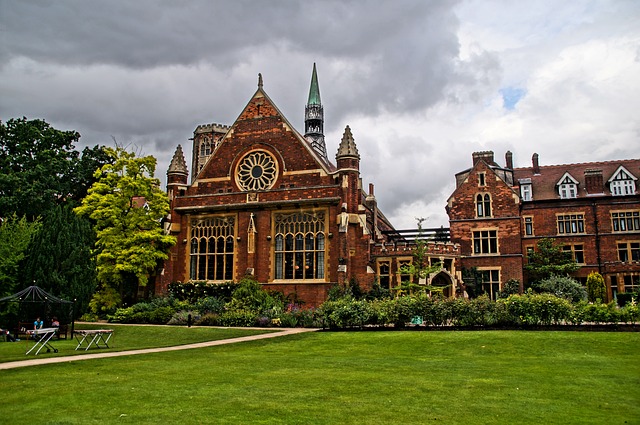Student housing pros include access to education, vibrant social scenes, and diverse amenities in dynamic cities. Cons may involve competitive rental markets, higher costs, limited availability, and poorly maintained properties. Cities like Portland, Austin, and Minneapolis offer affordable options without sacrificing campus proximity, convenience, and community. Shared spaces and student co-ops provide unique environments with enhanced collaboration and reduced rent. Prioritizing safety, key amenities, and personal preferences helps students make informed decisions for a positive urban living experience.
University cities offer vibrant student rental markets with unique advantages. Exploring top destinations for student housing not only provides access to quality education but also immerses you in a dynamic lifestyle. This article delves into the pros and cons of living in these areas, highlighting affordable options like budget-friendly locations and innovative accommodations such as shared spaces and co-ops. We’ll guide you through key factors like safety and amenities to ensure a rewarding student housing experience.
- Exploring Top University Cities for Student Housing
- Pros of Living in Vibrant Student Rental Markets
- Cons to Consider: Challenges in Student Housing
- Affordable Options: Best Budget-Friendly Locations
- Unique Accommodation: From Shared Spaces to Co-ops
- Safety and Amenities: Key Factors for Student Renters
Exploring Top University Cities for Student Housing

When exploring top university cities for student housing, it’s crucial to balance the student housing pros and cons. On one hand, these urban centers offer easy access to educational institutions, vibrant social scenes, and a plethora of amenities that cater to students’ unique needs. From well-maintained dormitories to affordable off-campus apartments, these cities provide diverse living options suited for every budget and preference.
On the other hand, high demand can translate into competitive rental markets, limited availability, and potentially higher costs. Additionally, navigating unfamiliar neighborhoods may require adjustments to find safe, comfortable, and welcoming environments. However, with thorough research, prioritizing needs, and considering both the advantages and disadvantages, students can discover the ideal university city that fosters academic success and a memorable living experience.
Pros of Living in Vibrant Student Rental Markets

Living in vibrant student rental markets offers a myriad of benefits for prospective students. Firstly, these cities often boast diverse and dynamic communities, providing an enriching environment that goes beyond the classroom. Students can immerse themselves in local cultures, engage with like-minded peers from various backgrounds, and access a wealth of social activities and events tailored to their interests. This vibrant atmosphere fosters personal growth and creates lasting memories.
Moreover, these markets typically feature well-developed infrastructure designed to support student life. Easy accessibility to educational institutions, extensive public transport networks, and the convenience of nearby shops, cafes, and restaurants make daily commuting a breeze. Student rental options often include modern accommodations with shared spaces and amenities, fostering a sense of community among residents. This balance between vibrant surroundings and practical living arrangements ensures students can thrive both academically and socially during their university years.
Cons to Consider: Challenges in Student Housing

Student housing, while offering numerous advantages, also presents several challenges that prospective tenants should be aware of. One significant con is the potential for higher costs compared to traditional rental options. Many student accommodations are located in popular areas close to campuses, which often drives up prices. Students on tight budgets might struggle to find affordable housing, especially during peak moving seasons.
Another challenge lies in the limited availability and variety of choices. Popular university cities tend to have a high demand for student accommodation, leading to a competitive rental market. This can make it difficult for students to find suitable options that meet their specific needs, such as shared flats or private studios. Moreover, some properties might be poorly maintained or lack essential amenities, requiring students to invest in furniture and appliances themselves.
Affordable Options: Best Budget-Friendly Locations

University cities offer a plethora of student rental options, but finding affordable ones can be challenging. However, several locations stand out for their budget-friendly offerings without compromising on student housing pros like proximity to campus, convenience, and vibrant communities. For instance, cities like Portland, Oregon; Austin, Texas; and Minneapolis, Minnesota, are known for their relatively lower cost of living compared to other metro areas, making them attractive choices for students on a tight budget.
These cities not only provide accessible student housing but also offer various pros such as robust public transportation systems, diverse cultural events, and a strong sense of community—all while maintaining a balance in expenses. However, there are cons to consider, such as limited availability during peak seasons and the need to be proactive in finding suitable accommodations early on. But for those willing to plan ahead, these budget-friendly locations offer an excellent blend of affordability and student-centric amenities.
Unique Accommodation: From Shared Spaces to Co-ops

Many university cities offer unique accommodation options that go beyond traditional student flats or residencies. One notable choice is shared spaces, where students can rent a room within a larger home, often sharing common areas like kitchens and living rooms with fellow students. This option typically offers lower costs and fosters a sense of community among residents.
Alternatively, student co-ops provide an entirely different experience. In these cooperative housing arrangements, tenants actively participate in the management and operation of their living space, often at reduced rent. Co-ops encourage collaboration, sustainability, and a strong sense of ownership among members, making them an attractive choice for students looking for more than just a place to sleep – they seek an environment that promotes shared responsibilities and community engagement, balancing out the student housing pros and cons.
Safety and Amenities: Key Factors for Student Renters

When considering student rental options, safety and amenities are paramount. These factors significantly influence a student’s overall experience and well-being in their new urban environment. A secure neighbourhood with low crime rates ensures peace of mind for students as they navigate their daily routines, from attending classes to studying and socializing. Well-lit streets, accessible public transport, and nearby convenience stores or markets are also essential amenities that contribute to a comfortable living experience.
Moreover, modern conveniences like high-speed internet connectivity, well-maintained common areas, and on-site laundry facilities offer numerous benefits for students. These amenities cater to the needs of digital natives who rely heavily on technology for academic work and social interaction. Balancing the pros and cons of student housing, such as cost-effectiveness versus limited privacy or shared spaces, allows renters to make informed decisions that align with their priorities, ultimately enhancing their university city experience.






